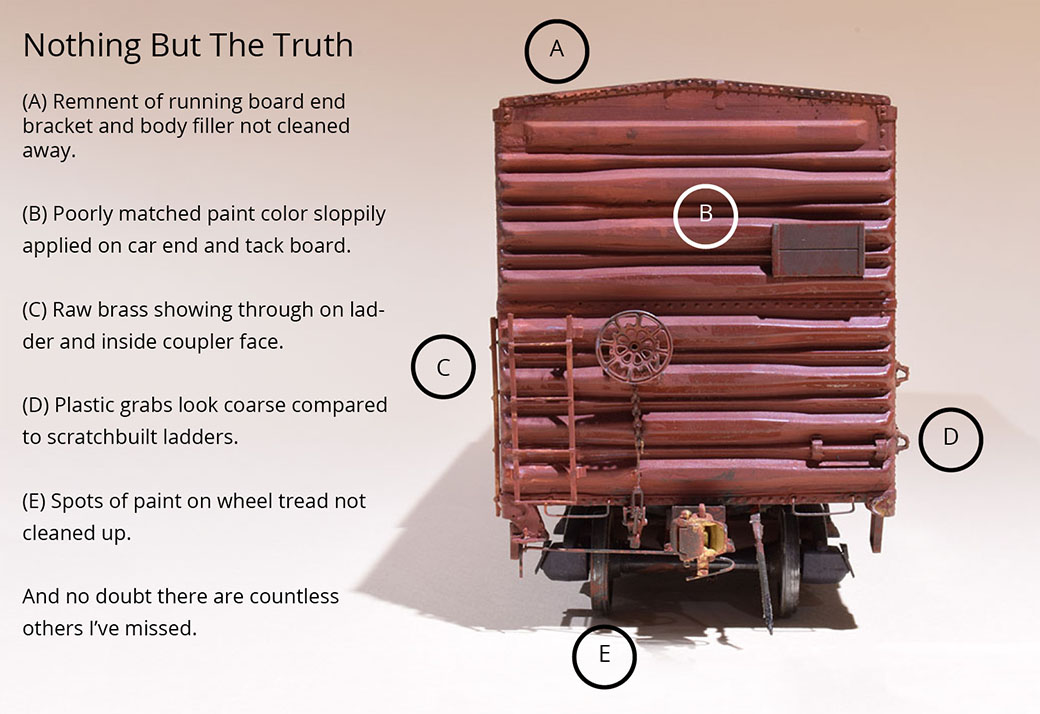I draw inspiration for these posts from a number of sources that have little or nothing to do with railroad modeling. One such source is a blog written by woodworker Doug Stowe called Wisdom of The Hands. As a full time woodworker and teacher of woodworking, Mr Stowe knows a few things about how we learn by using our hands to craft and build things. While I’ve only just begun to explore his writings, I’ve already found a lot of practical applications to our craft of model building.
This particular post has much to offer. In it he reviews a thoughtful series of questions a teacher might use to gauge a student’s progress. I think the application to our work is self evident.
I make no pretense to being a skilled model builder. I have a great deal to learn as I’ve just started to take my time at the bench seriously. In that light, I present this photo of one of my recent projects with my observations about the work.

Some may think I’m being too hard with my assessment of this model. I take the opposite view that in being honest about my lack of attention to these details, I’m acknowledging that I have room to improve and that I’m capable of doing so. As Mr Stowe suggests in his post, this is an act of self-respect (…is his work carried on that self-respect is developed rather than vanity?)
I have little patience for the fawning comments people offer on many blogs and forums when someone posts their work.
WOW!
That’s AWESOME!!!
Fantastic!
Comments like that may stroke the ego but do nothing to help the modeler grow. Genuine constructive criticism is rare and hard to give. Few, myself included, know how to give it in ways that actually help the recipient. My only intention in posting that merciless photo is to help you understand the ways this craft can add to your life beyond the banal idea of how much fun it is.
I’m guilty of romanticizing craftsmanship and finescale modeling, adding fuel to the misplaced idea that such work is reserved for a chosen few. Nothing could be further from the truth. Such work is within the reach of anyone willing to make the effort to understand the skills involved. As greater numbers of modelers become dependent on the skills of Chinese factory workers rather than their own, our craft becomes less relevant and weaker.
Regards,
Mike
The standard excuse is to say that it looks like weathering, that weathering will conceal it, or that if you stand back 3 feet, it isn’t noticeable on a working layout.
To which I can ony say, no it doesn’t; hiding substandard work under weathering is only cheating yourself; and that the “3 feet” rule is ok if that’s your chosen path. But that is not your path, so why would it be acceptable to someone who cares about getting it right?
If you care about the truth, then only the truth – however painful – is good enough.
The “good enough” philosophy works two ways: it can be the driving force behind working to the highest standards, as well as accepting moulded-on details. Just depends where “good” is pitched for it to be enough…
Keep the faith!
Simon